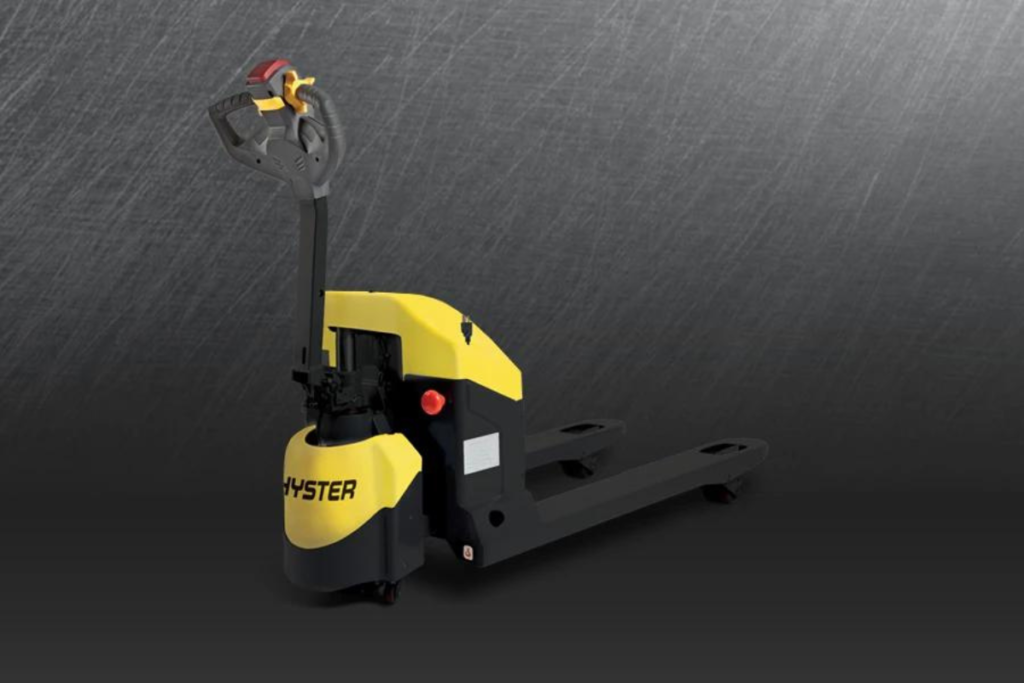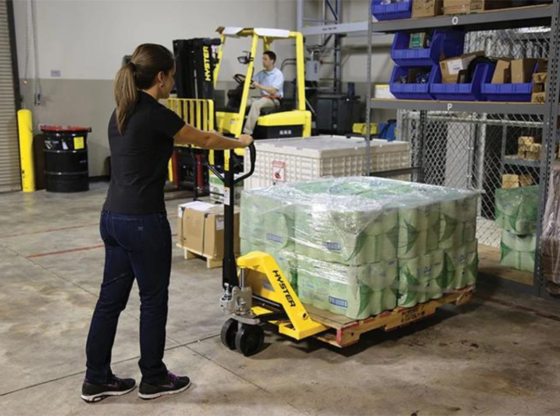Efficient materials handling is at the core of streamlined warehouse operations, and selecting the right power pallet truck is a critical decision. Let’s explore the key considerations in choosing a pallet truck, define what a power pallet truck is, discuss instances where powered pallet trucks excel, and guide you on determining the appropriate size for your needs.
How do I Choose a Pallet Truck?
Weight Capacity: Assess the weight of the loads you’ll be handling. Choose a pallet truck with a weight capacity that comfortably accommodates your heaviest loads.
Operating Environment: Consider the environment in which the pallet truck will operate. A compact and maneuverable design is essential for confined spaces or narrow aisles.
Power Source: Pallet trucks come in manual and powered options. Assess the volume of materials handling tasks and decide between a manual pallet truck for occasional use or a powered one for increased efficiency in high-volume applications.
Fork Length and Width: Ensure that the fork length and width match the dimensions of the pallets you commonly handle. This guarantees stability and ease of use.
Terrain: If the pallet truck will be used on uneven surfaces or ramps, opt for models with features like larger wheels and enhanced stability for smooth operation.
What is a Power Pallet Truck?
A power pallet truck, also known as an electric pallet truck, is a materials-handling device powered by an electric motor. Unlike manual pallet trucks that require physical effort to maneuver, power pallet trucks use electric power to lift, lower, and move palletized loads. They are designed for efficiency, reducing operators’ strain and increasing materials handling tasks’ productivity.
Instances Where Powered Pallet Trucks Excel
In what instances are powered pallet trucks a more appropriate option?
High-Volume Handling: Powered pallet trucks are ideal for warehouses with high-volume materials handling requirements. The electric-powered lift and movement significantly increase efficiency in frequent pallet movement tasks.
Long-Distance Travel: If materials need to be transported over longer distances within a facility, powered pallet trucks offer a faster and less labor-intensive solution than their manual counterparts.
Reducing Operator Fatigue: In repetitive lifting and maneuvering situations, powered pallet trucks minimize operator fatigue. This is crucial for maintaining a productive and motivated workforce.
Multi-Shift Operations: Powered pallet trucks can be used continuously by warehouses operating multiple shifts without the physical strain of manual alternatives.

What Size Pallet Truck Do I Need?
Load Dimensions: Measure the dimensions of the loads you commonly handle. The pallet truck’s fork length and width should comfortably accommodate these dimensions.
Weight Capacity: Determine the weight capacity required based on the heaviest loads you handle. Ensure the pallet truck’s capacity exceeds the weight of your heaviest pallets.
Aisle Width: Consider the aisle width in your warehouse. Opt for a pallet truck that fits comfortably within the available space for efficient maneuvering.
Height Restrictions: If your warehouse has height restrictions, ensure the mast height of the powered pallet truck allows easy navigation without the risk of collisions.
Choosing the right power pallet truck involves carefully evaluating your material handling needs. For a range of reliable and efficient power pallet trucks, explore Kanoo Machinery’s Materials Handling Solutions. Their diverse offerings cater to various requirements, ensuring you find the perfect solution for your warehouse operations.
In conclusion, selecting a power pallet truck is a strategic decision that impacts the efficiency and productivity of warehouse operations. By considering factors such as weight capacity, operating environment, and power source, you can make an informed choice that aligns with the unique needs of your materials handling tasks.



















